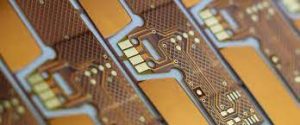Cost of Flex PCB Fabrication
Printed circuit boards (PCBs) come in many shapes and sizes. Each PCB type has different characteristics that can impact the cost of fabrication. Rigid flex PCBs are a popular choice because they combine the advantages of rigid and flexible connections in one package. However, flex circuits can also be more expensive to fabricate than a standard rigid board due to the additional materials and design considerations that go into them.
To minimize cost, designers should consider the following factors influencing the cost of flex pcb fabrication when choosing an appropriate circuit board design:
Layout: Effective utilization of panel space correlates directly with fab costs. It’s important to consider signal return paths, power/ground planes, stripline routing needs and component clearance when determining the best arrangement for a design. A smaller layout will help reduce the number of layers needed for manufacturing, thereby reducing overall fabrication and assembly costs.
Layer count: Increasing the number of layers in a PCB will increase its total cost. This is because the more layers a circuit board has, the more materials it will require to construct. Likewise, lowering the layer count will decrease the amount of prepreg required to bond the final composite package together.

Factors Influencing the Cost of Flex PCB Fabrication
Flex materials are dimensionally unstable and may encounter problems with layer-to-layer registration. This increases the chances of errors that can reduce yields and raise processing times. For this reason, the use of flex material should only be considered when necessary.
Drill hole count: The more mechanical holes drilled into a PCB, the higher its production costs will be. This is because each hole requires more preparation and advanced drilling techniques, which adds to the total manufacturing cost. In addition, a larger number of holes increases the likelihood that the inner-layer copper will be damaged. In turn, this will lead to a reduction in the current-carrying capacity of the circuit board.
Specialty features: These can include via in pads requiring filled vias, dual surface finishes like ENIG and electroplated nickel gold or hot air leveled solder, buried and blind vias, inner-layer copper thickness of greater than three ounces, blue and black solder mask, V scoring, etc. These techniques are difficult for fabricators to execute reliably and can result in lower manufacturi ng yields, escalating the overall cost of a PCB.
No flow prepregs: Rigid-flex manufacturers utilize no flow prepregs that are more expensive than traditional FR-4 and polyimide substrates. No flow prepregs gen erally cost 10X more than their conventional counterparts.
The most effective way to control flex circuit board production costs is through accurate design solutions and clear engineering strategies. Having consistent discussions with your PCB manufacturer can ensure that you are aware of the best ways to reduce the overall cost of your design. This can be done by optimizing your board’s layer count, minimizing the use of flex material, using the proper trace width and spacing, avoiding the use of special features like buried or blind vias, and by using low-cost fabrication processes.